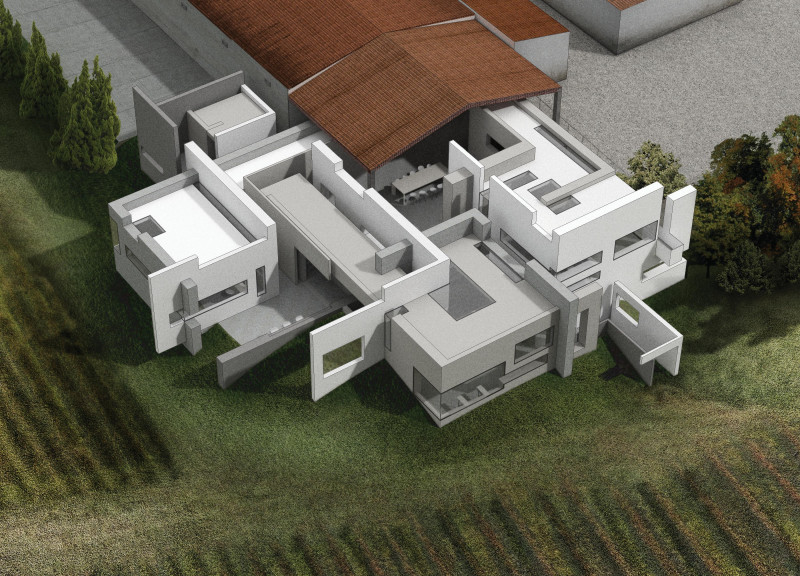5 key facts about this project
The Monte d'Oiro Wine Tasting Room is located in a serene landscape ideal for wine production. The design focuses on creating spaces that encourage engagement with wine tasting while connecting the interior and exterior environments. Visitors can experience a variety of settings that deepen their appreciation for the culture of wine.
Spatial Configuration
Three distinct wine tasting rooms are dedicated to red, white, and rosé wines. These rooms feature L-shaped walls that intentionally do not touch, allowing gaps that create pathways to outdoor spaces. This design promotes movement and establishes a continuous link with the natural surroundings, enabling visitors to explore freely.
Framing and Views
A key element of the design is the use of frames created by the relationships between the walls and roofs. These frames are functional as they enhance views and ease movement, enhancing visual connections between the inside of the tasting rooms and the outside landscape. By setting boundaries, the frames define different areas that offer varied levels of privacy and openness, catering to both social interaction and individual contemplation.
Integration with Existing Structure
The tasting room is designed to emerge from the original shed, offering a modern yet respectful take on the historical context. This integration fosters a sense of community, with multiple entry points leading to various areas of interest. The differing heights and sizes of the openings create unique visual experiences, allowing visitors to interact with the architecture and nature in personal ways.
Natural Interaction
The design emphasizes how the natural environment interacts with the wine tasting experience. As visitors move through the various spaces, they encounter views that connect them with the landscape. These thoughtfully placed openings invite sunlight and fresh air, enriching the overall atmosphere. The architecture intentionally blends structured spaces that enhance the act of tasting wine, providing an experience that invites appreciation and reflection.






















































